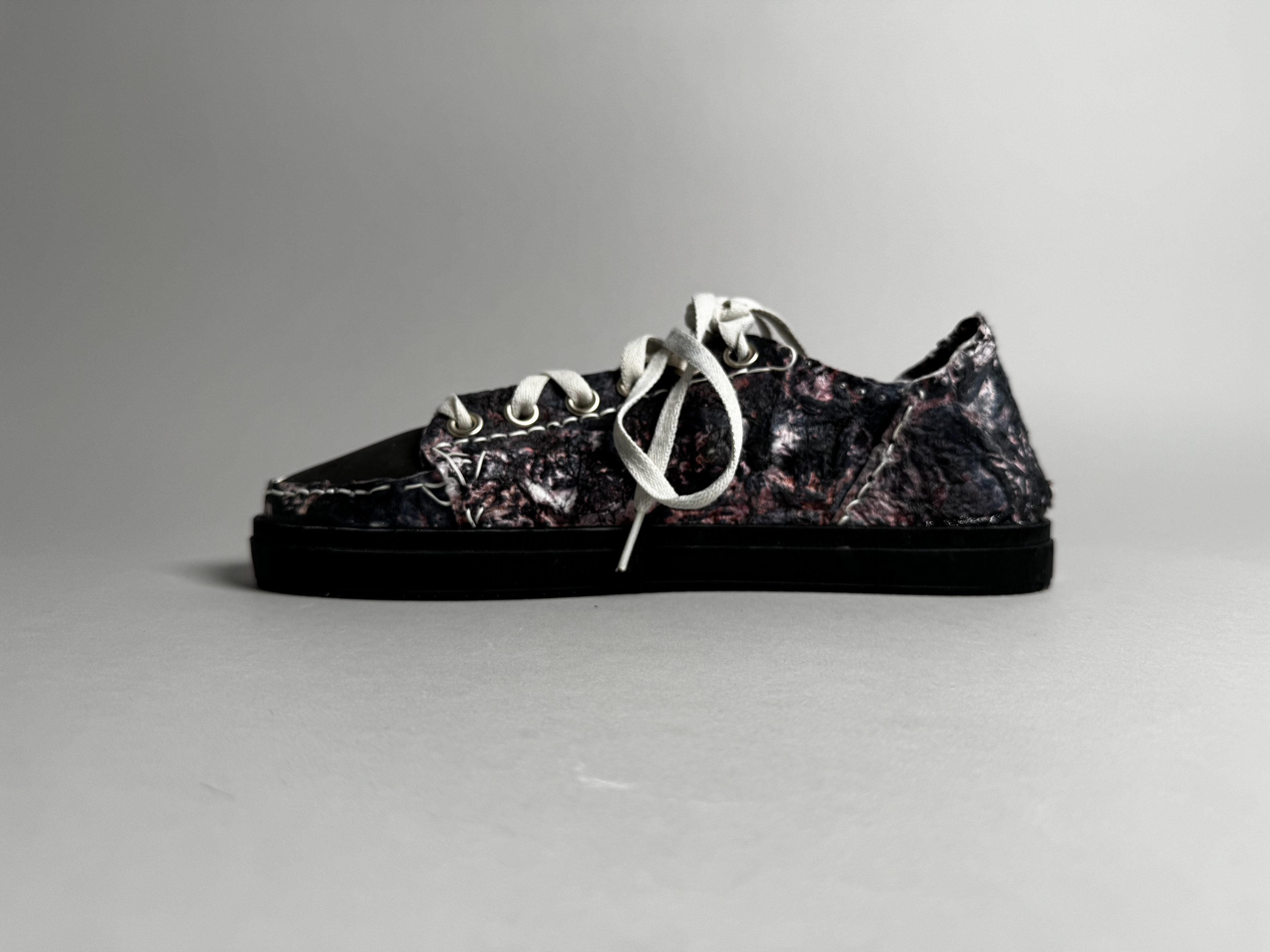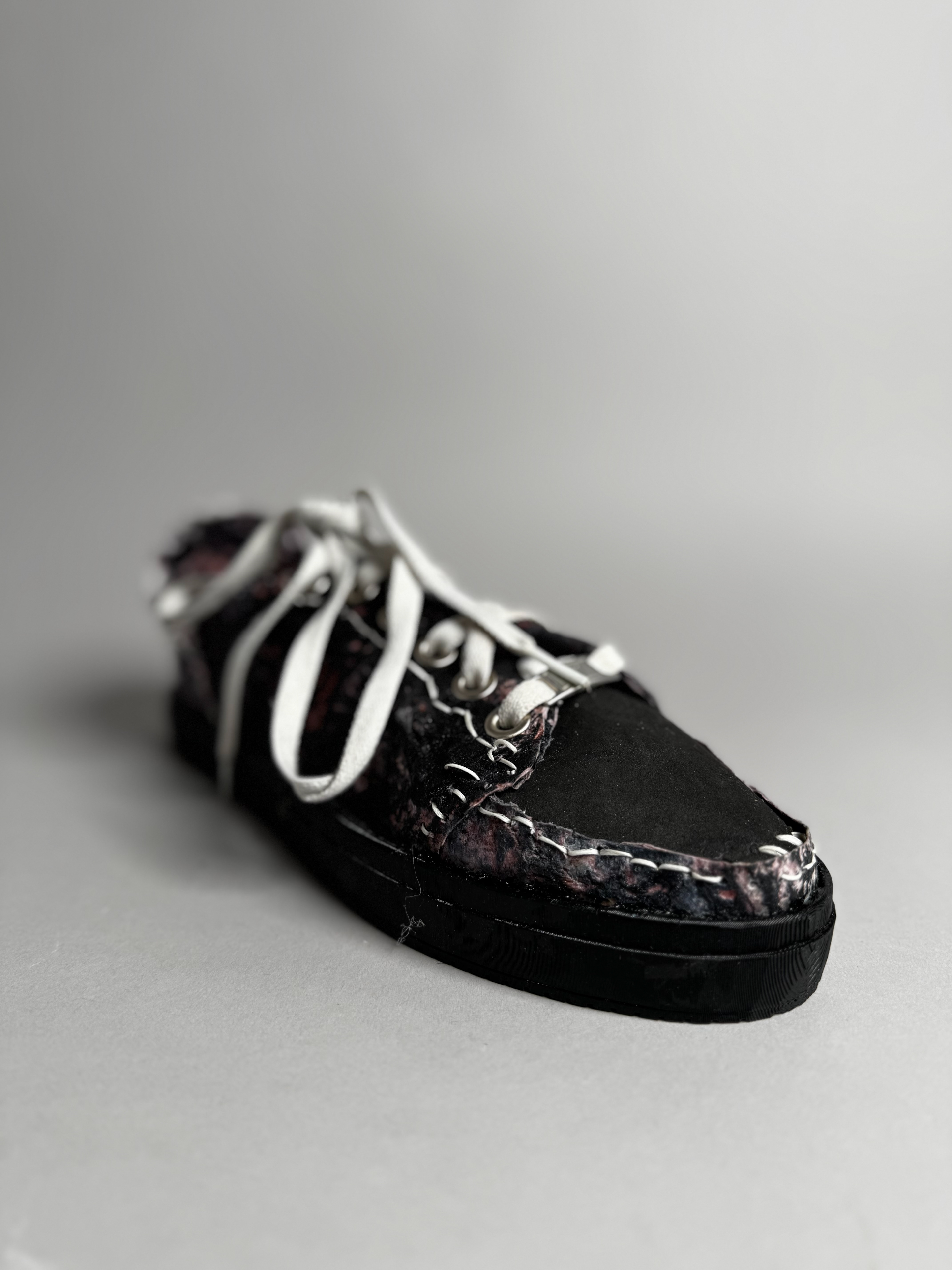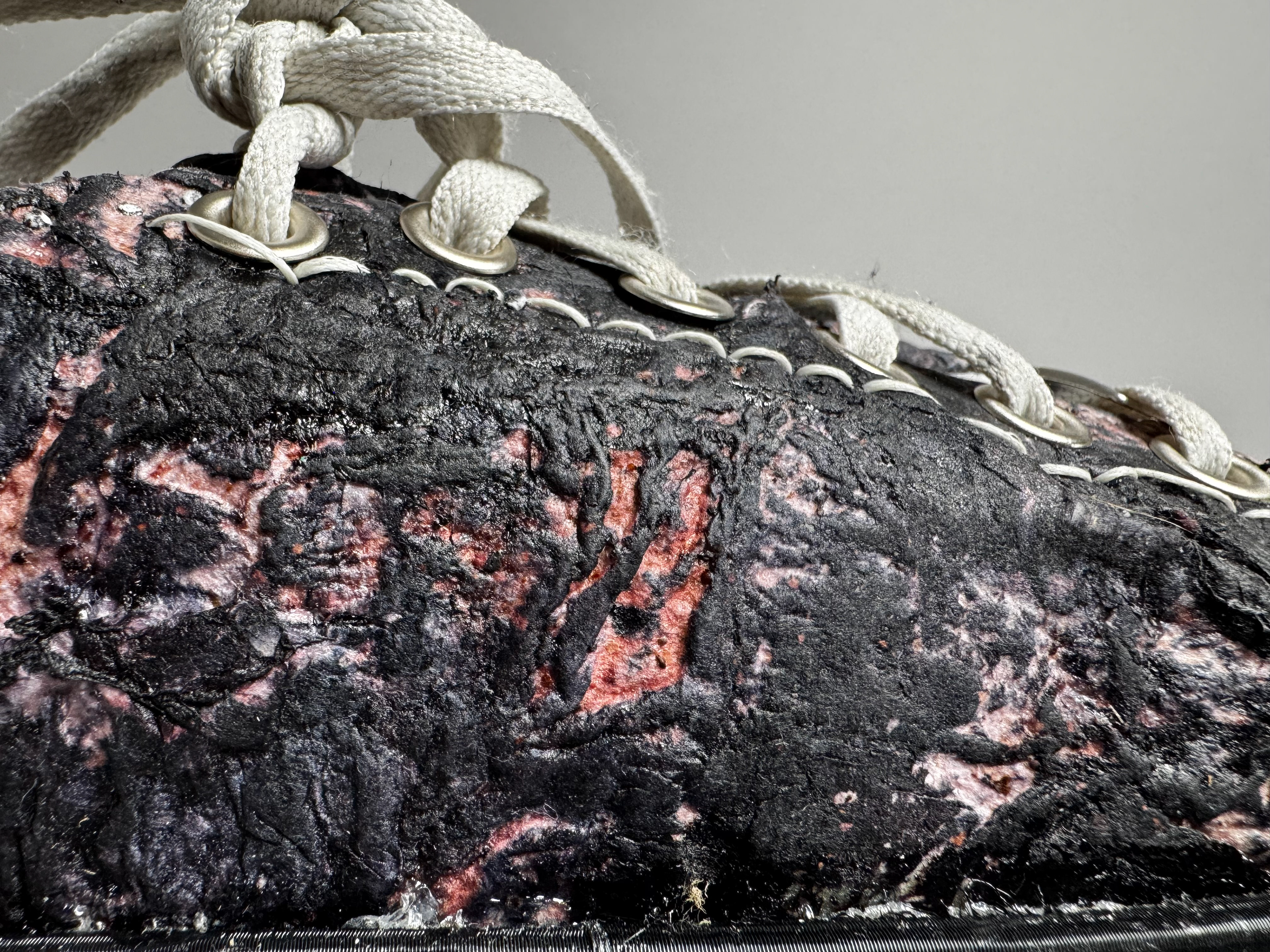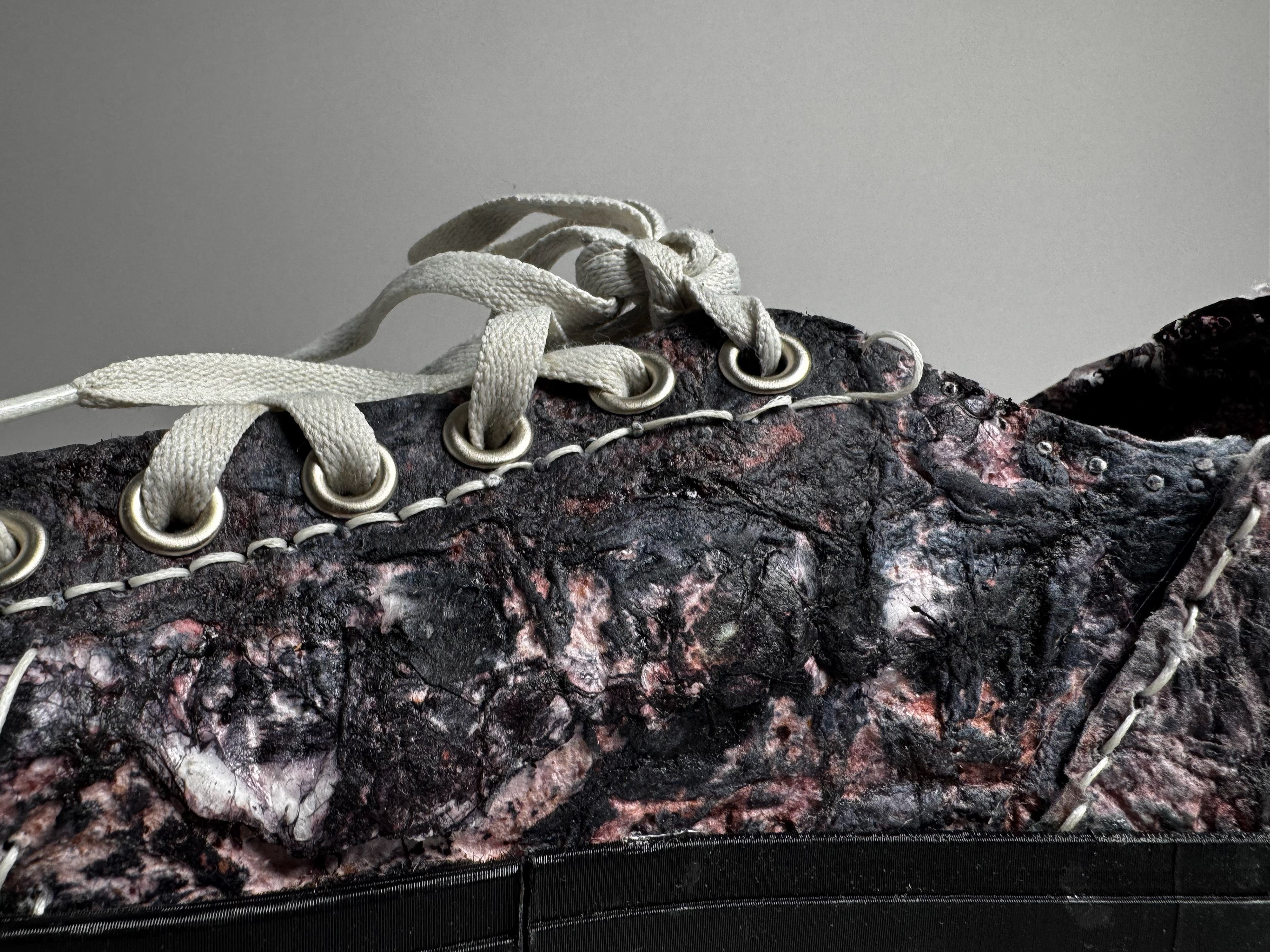Material Exploration
We began exploration with an existing bio-leather recipe from Materiom that includes water, vegetable glycerin, agar agar, and hemp. Instead of hemp, my group used cotton balls unraveled and cross-weaved. Then we poured the liquid, which was absorbed by the cotton.
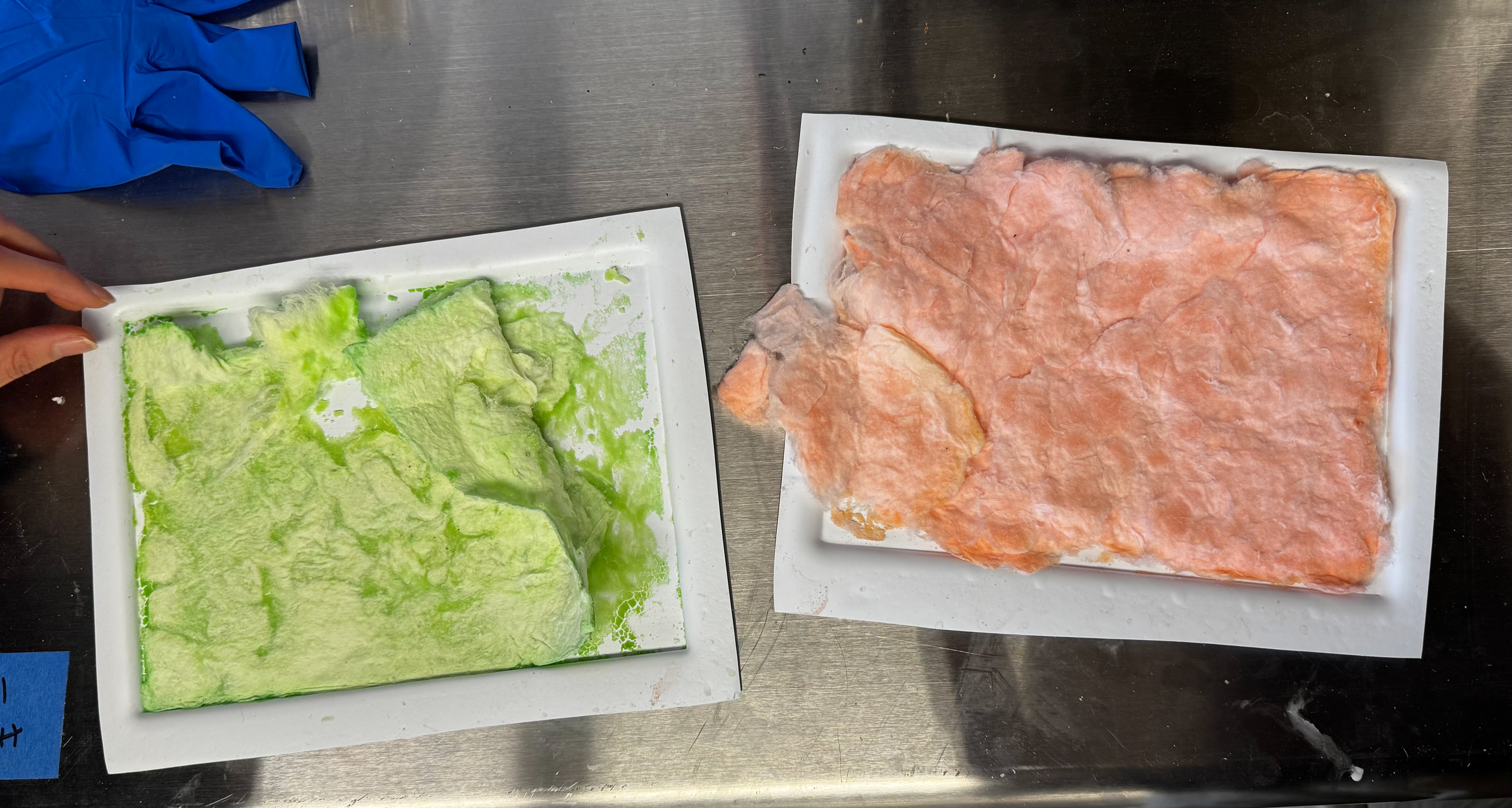
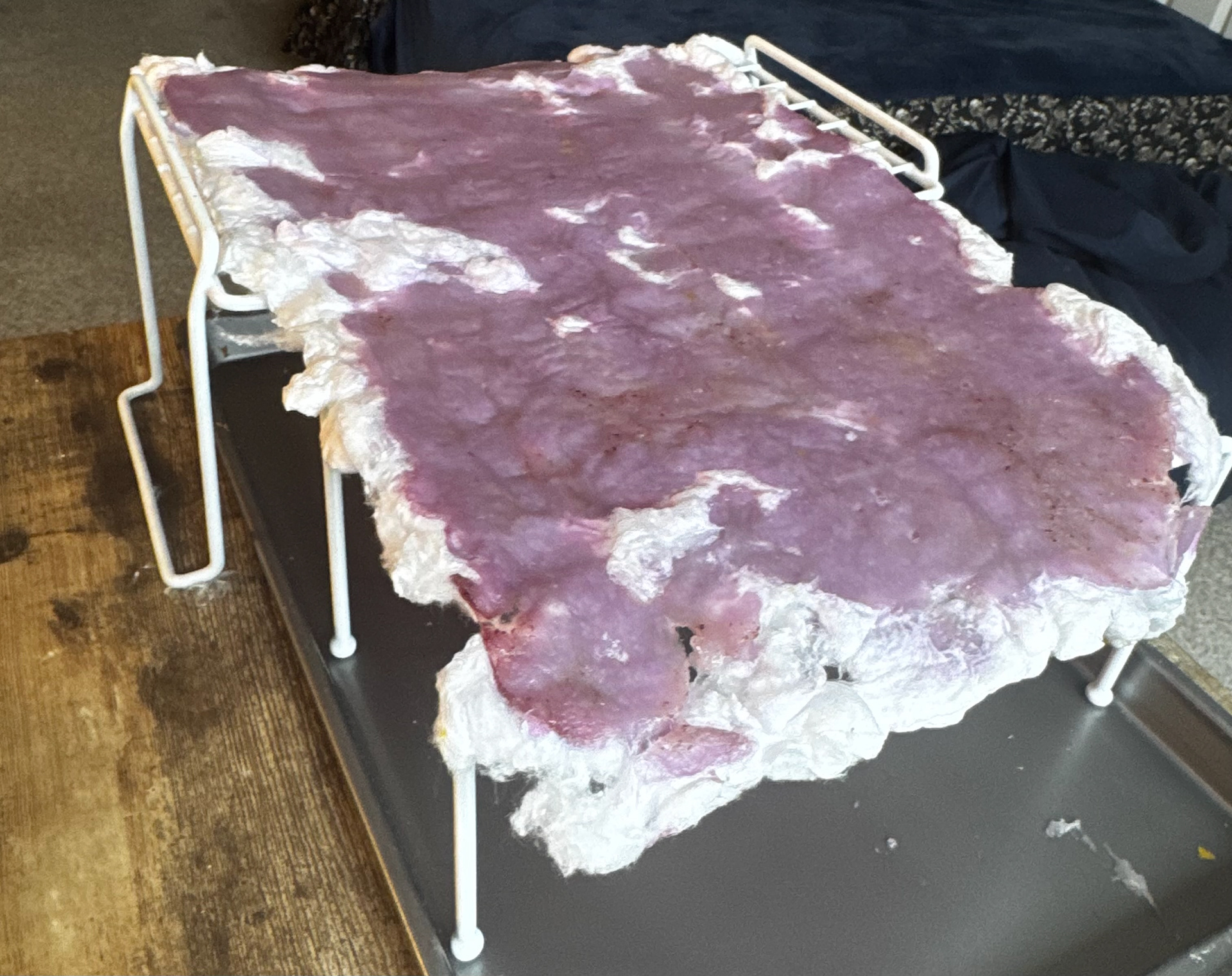
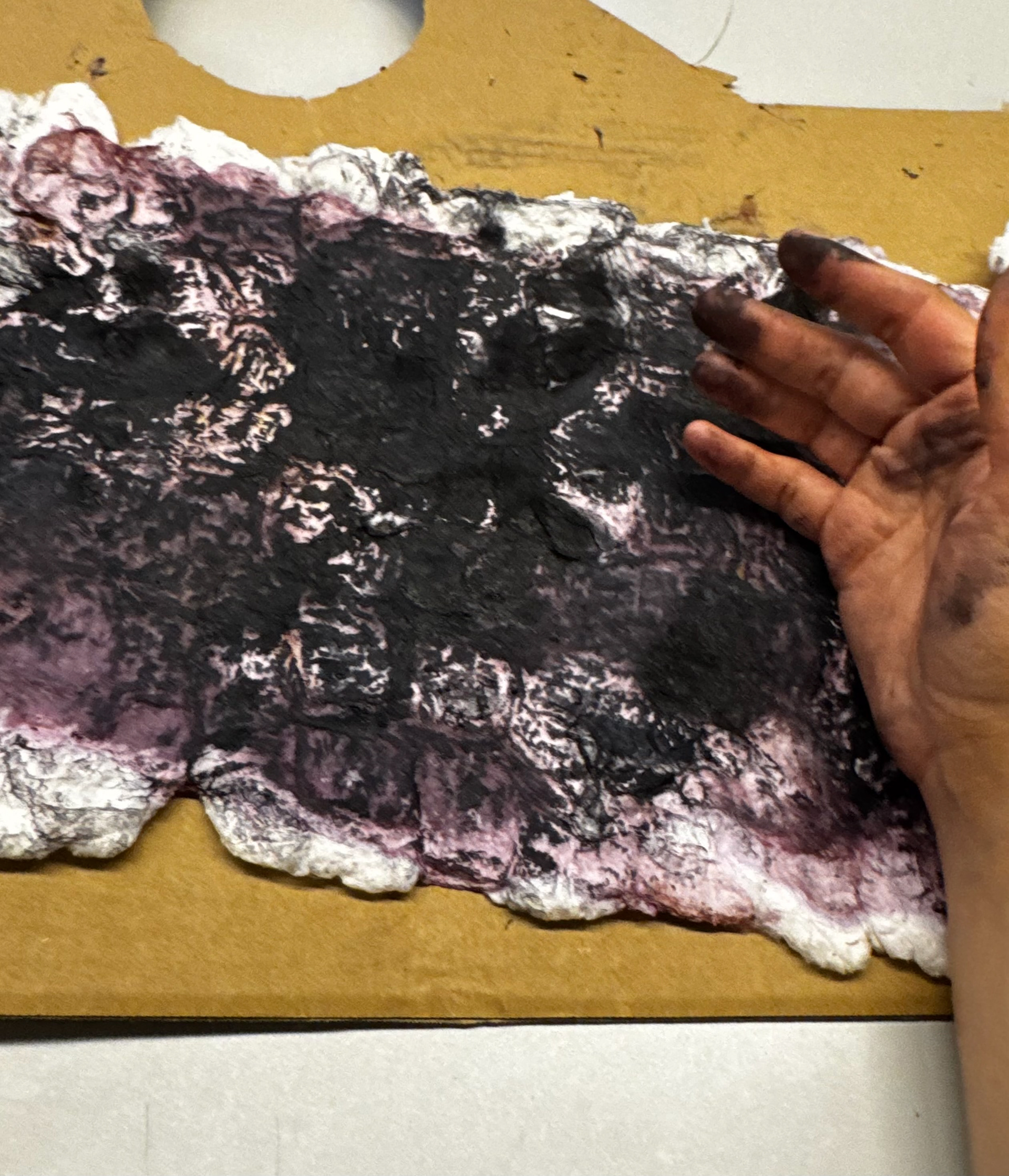
Fabrication
After the exploration, I found that the cotton leather was extremely distressed and didn't absorb the solution completely. To add pigment to the solution, I blended blueberries and mixed them with the solution to give a darker pigment. Once again, the solution wasn't properly distributed, so some pieces of cotton were exposed. To match the color of the cup sole (black), I used black ink and blotched it onto the exposed cotton. Then I ironed the material to remove any moisture.
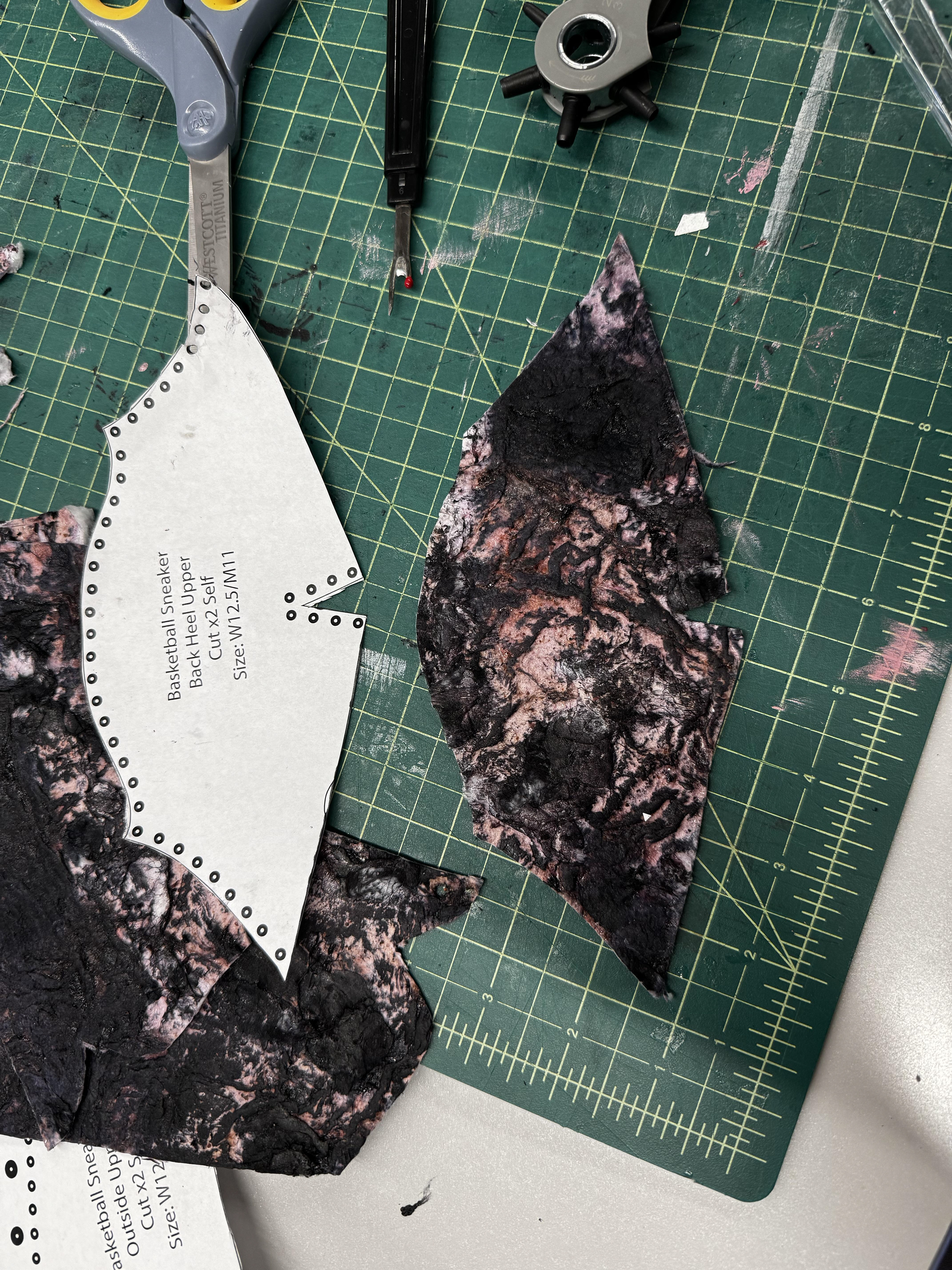
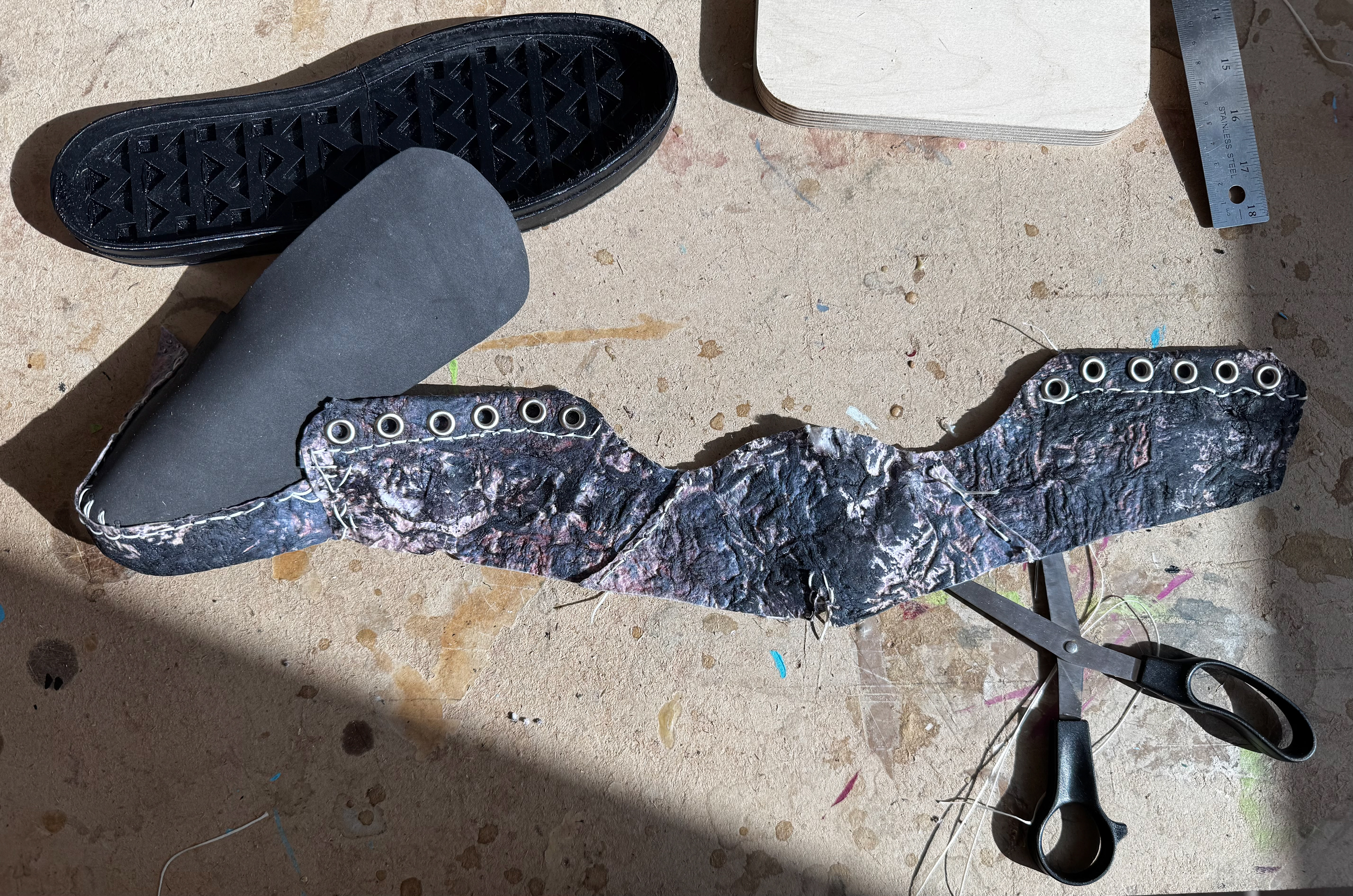
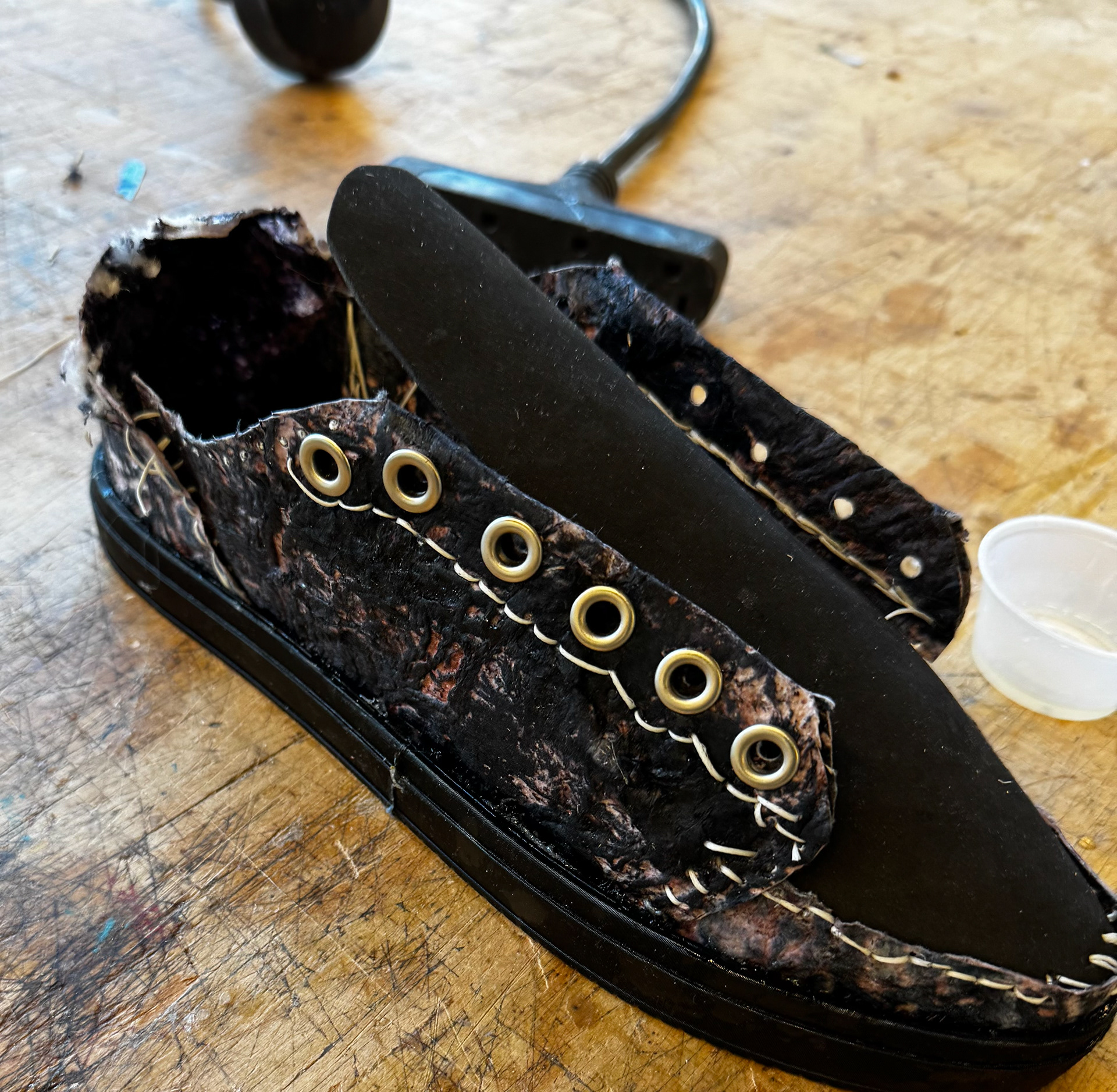
Assembly
I cut out the material using the sneaker template provided by our instructor. Realizing I ran out of material, I used black felt paper for the sneaker tongue, which matched the black cup sole and the black, charred texture.
I ironed the edges again to stabilize the material before hole-punching. After punching holes, I realized I cut out the template a bit lopsided, making assembly difficult. For assembly, our instructor advised back-stitching, which I found to be difficult, as I kept poking myself and misunderstanding the stitch pattern. Towards the end, however, I began to understand it better and have a consistent stitch line. I then took the assembled shoe to the grommet machine and punched 1/4th silver grommets to match the white lace and white stitch lines.
